Acknowledgements to – East of England Neonatal ODN Clinical Guideline: Developmental Care, Southampton NICU Developmental Care Guideline and The Northern Neonatal Network
1 Coughlin, M. (2014). Transformative Nursing in the NICU: Trauma-Informed Age-Appropriate Care. New York: Springer Publishing.
2 D’Agata, A.L., Sanders, M.R., Grasso, D.J., Young, E.E., Cong, X. and Mcgrath, J.M. (2017). UNPACKING THE BURDEN OF CARE FOR INFANTS IN THE NICU. Infant Mental Health Journal, 38(2), pp.306–317.
3 Johnson, S.B., Riley, A.W., Granger, D.A., & Riis, J. (2010). The science of early life toxic stress for pediatric practice and advocacy. Paediatrics Vol 131. pp. 319-327.
4 Marcellus,L and Cross,S. (2016). Trauma-Informed Care in the NICU: Implications for Early Childhood Development. Neonatal Network. Vol 35(6). pp. 359-366.
5 Altimier, L., & Phillips, R. (2016). The Neonatal Integrative Developmental Care Model: Advanced Clinical Applications of the Seven Core Measures for Neuroprotective Family-centered Developmental Care. Newborn & Infant Nursing Reviews, 16(4), 230–244. https://doi-org.ezproxy.napier.ac.uk/10.1053/j.nainr.2016.09.030
6 Poppy Report, 2009 – Premature Babies project.
7 Pineda, R., Bender, J., Hall, B., Shabosky, L., Annecca, A. and Smith, J. (2018). Parent participation in the neonatal intensive care unit: Predictors and relationships to neurobehavior and developmental outcomes. Early Human Development, 117(18), pp.32–38.
8 Lahave, A. and Skoe, E. (2014) An acoustic gap between the NICU and womb: a potential risk for compromised neuroplasticity of the auditory system in preterm infants. Frontiers in Neuroscience. Vol 8, pp.381.
9 Graven, S, N. and Browne.J. V (2008) Auditory Development in the foetus and infant. Newborn and Infant Nursing Reviews, Vol. 8(4), pp.187-193.
10 Austin, T. and Edwards, A. (2016). Noise in the NICU: how prevalent is it and is it a problem? Noise in the NICU: how prevalent is it and is it a problem?, [online] 12(5). Available at: Noise in the NICU: how prevalent is it and is it a problem?.
11 Almadhoob, A. and Olhsson, A. (2015) Sound reduction management in the neonatal intensive care unit for preterm or very low birth weight infants. Cochrane Database Systematic Reivews. Available: https://doi.org/10.1002/14651858.CD010333.pub2
12 WHO https://www.who.int/ceh/capacity/noise.pdf
13 Garinis, A, C., Kemph, A., Tharpe, A, M., Weitkamp, J., McEvoy, C. and Steyger. P, S. (2018) Monitoring Neonates for Ototoxicity. International Journal of Audiology. Vol 57(4), pp. 41-48.
14 Ranganna, R. and Bustani, P. (2011) Reducing noise on the neonatal unit, Infant Joural. Vol 7(1), pp. 25-18.
15 Rodriguez, R.G. & Pattini, A.E. (2016). Neonatal intensive care unit lighting: update and recommendations. Archivos Argentinos de Pediatria, Vol.114 (4), pp.361-367.
16 White, A. and Parnell, K. (2013) The transition from tube to full oral feeding (breast or bottle) – A cue-based developmental approach. Journal of Neonatal Nursing. Vol.19 (4), pp.189-197.
17 Graven, S. (2011) Early visual development: implications for the neonatal intensive care unit and care. Clinics in Perinatology, Vol.38 (4) pp.671-683.
18 Mirmiran, M. and Ariagno, R.L. (2000). Influence of light in the NICU on the development of circadian rhythms in preterm infants. Seminars in Perinatology, [online] 24(4), pp.247–257. Available at: https://www.sciencedirect.com/science/article/pii/S0146000500800361?via%3Dihub [Accessed 12 Mar. 2021].
19 Figueiro, M.G., Appleman, K., Bullough, J.D. and Rea, M.S. (2006). A discussion of recommended standards for lighting in the newborn intensive care unit. Journal of Perinatology, [online] 26(3), pp.S19–S26. Available at: https://www.nature.com/articles/7211586#article-info [Accessed 12 Mar. 2021].
20 Olena Chorna, Jessica E Solomon, James C Slaughter et al.Abnormal sensory reactivity in preterm infants during the first year correlates with adverse neurodevelopmental outcomes at 2 years of age. Arch Dis Child Fetal Neonatal Ed. 2014 November ; 99(6): F475–F479
21 Julia P. Owen et al. Abnormal white matter microstructure in children with sensory processing disorders. NeuroImage: Clinical 2 (2013) 844–853
22 AC Wickremasinghe et al. Children born prematurely have atypical Sensory Profiles. Journal of Perinatology (2013) 33, 631–635
23 Boardman JP et al. Impact of preterm birth on brain development and long-term outcome: protocol for a cohort study in Scotland. BMJ Open 2020;10:e035854.
24 Mitchell AW et al. Sensory Processing Disorder in Children Ages Birth–3, Years Born Prematurely: A Systematic Review. The American Journal of Occupational Therapy 6901220030p1 .
25 J Can et al. Brain Plasticity and Behaviour in the Developing Brain. Acad Child Adolesc Psychiatry. 2011 Nov; 20(4): 265–276.
26 K.J.S. Anand et al . Clinical Importance of Pain and Stress in Preterm Neonates. Biol Neonate 1998;73:1–9
27 Closeness and separation in neonatal intensive care, Acta Pædiatrica ISSN 0803–5253
28 Cortisol levels in former preterm children at school age are predicted by neonatal procedural pain-related stress, Psychoneuroendocrinology (2015) 51, 151—163
29 Infant Medical Trauma in the Neonatal Intensive Care Unit (IMTN), A Proposed Concept for Science and Practice. Advances in Neonatal Care, Vol. 00, No. 00, pp. 1-9
30 Kangaroo Mother Care: A method for protecting high-risk low-birth-weight and premature infants against developmental delay. Infant Behaviour & Development 26 (2003) 384–397
31 Sandra E. Trehub et al . Singing Delays the Onset of Infant Distress, , Infancy, 21(3), 373–391, 2016
32 Spittle, A., Orton, J., Anderson, P.J., Boyd, R. and Doyle, L.W. (2015). Early developmental intervention programmes provided post hospital discharge to prevent motor and cognitive impairment in preterm infants. [online] Available at: https://www.cochranelibrary.com/cdsr/doi/10.1002/14651858.CD005495.pub4/full [Accessed 11 Feb. 2021].
33 Ruth Feldman et al, Maternal-Preterm Skin-to-Skin Contact Enhances Child Physiologic Organization and Cognitive Control Across the First 10 Years of Life. www.sobp.org/journal
34 Montirosso R, et al. Promoting neuroprotective care in neonatal intensive care units and preterm infant development: insights from the neonatal adequate care for quality of life study. Child Dev Perspect. 2017;11(1):9-15. doi:10.1111/cdep.12208
35 Spahn, J.M., Callahan, E.H., Spill, M.K., Wong, Y.P., Benjamin-Neelon, S.E., Birch, L., Black, M.M., Cook, J.T., Faith, M.S., Mennella, J.A. and Casavale, K.O. (2019). Influence of maternal diet on flavor transfer to amniotic fluid and breast milk and children’s responses: a systematic review. The American Journal of Clinical Nutrition, [online] 109(Supplement_1), pp.1003S1026S. Available at: https://academic.oup.com/ajcn/article/109/Supplement_1/1003S/5456696 [Accessed 12 Oct. 2020].
36 André, V., Henry, S., Lemasson, A., Hausberger, M. and Durier, V. (2017). The human newborn’s umwelt: Unexplored pathways and perspectives. Psychonomic Bulletin & Review, 25(1), pp.350–369.
37 Mennella, J.A. and Bobowski, N.K. (2015). The sweetness and bitterness of childhood: Insights from basic research on taste preferences. Physiology & Behavior, [online] 152, pp.502–507. Available at: https://www.sciencedirect.com/science/article/abs/pii/S003193841500298X?via%3Dihub.
38 Barking, Havering and Redbridge University Hospitals (2011) Guidelines For the Use of The Cuskiboo, NHS Trust
39 Jones, E. & Spencer, S. (2005) How to achieve successful preterm breastfeeding. Infant. Vol 1(4), pp. 11-15
40 Sparshott, M. (1997). Pain, Distress and the Newborn Baby. Oxford. Blackwell Science
41 Fazli, S.M., Mohamadzadeh, A., Salari, M. and Karbandi, S. (2017). Comparing the Effect of Non-nutritive Sucking and Abdominal Massage on Feeding Tolerance in Preterm Newborns. Evidence Based Care, [online] 7(1), pp.53–59. Available at: http://ebcj.mums.ac.ir/article_8506.html [Accessed 29 May 2020].
42 Gotsch, G. (1995). Pacifiers: Yes or No? New Beginnings. 12 (6). p172-173.
43 Reid, T. and Freer, Y. (2000). Developmentally focused nursing care. IN Boxwell, G. (ed.) (2000).
44 Foster JP, Psaila K, Patterson T. (2017). Non-nutritive sucking for increasing physiologic stability and nutrition in preterm infants. Cochrane Database of Systematic Reviews update to 2016, Issue 10. Art. No.: CD001071. DOI: 10.1002/14651858.CD001071.pub3.
Journal of Paediatrics and Child Health. 53 p 33.
45 Kaya, V. Aytekin, A. (2017). Effects of pacifier use on transition to full breastfeeding and sucking skills in preterm infants:a randomised controlled trial . Journal of Clinical Nursing. 26 (13-14) p2055.
46 Rainsford, F. (2001). Pacifier Prohibition: Is the evidence relevant to the separated infant? Journal of Neonatal Nursing. 7 (5). p175-179.
47 Stevens B, Yamada J, Lee GY, Ohlsson A. (2013). Sucrose for analgesia in newborn infants undergoing painful procedures. Cochrane Database of Systematic Reviews 2013, Issue 1. Art. No.: CD001069. DOI: 10.1002/14651858.CD001069.pub4.
48 Thakkar, P. Arora, K. Goyal, K. Das, R. Javadekar, B. Aiyer, S. Panigtrahi, S. (2016). To evaluate and compare the efficacy of combined sucrose and non-nutritive sucking for analgesia in newborns undergoing
49 Hauck, F.R. (2005). Do Pacifiers Reduce the Risk of Sudden Infant Death Syndrome? A Meta-analysis. PEDIATRICS, 116(5), pp.e716–e723.
50 Shah, V. O’Brien, K. Bracht, M. Warre, R. Ho, H. Chen, C. Davey, C. Ying, E. Campbell, D. Chisamore, B. Lee, S. (2015). Family integrated care” in level II NICUS: Perspectives of administrators, healthcare Personnel, and parents regarding Implementation. Paediatric Child Health. 20 (5).
51 Shaker, C.S. (2013). Cue-Based Feeding in the NICU: Using the Infant’s Communication as a Guide. Neonatal Network, 32(6), pp.404–408.
52 White, A. and Parnell, K. (2013) The transition from tube to full oral feeding (breast or bottle) – A cue-based developmental approach. Journal of Neonatal Nursing. Vol.19 (4), pp.189-197.
53 Thoyre, S., Park, J., Pados, B. and Hubbard, C. (2013). Developing a co-regulated, cue-based feeding practice: The critical role of assessment and reflection. Journal of Neonatal Nursing, 19(4), pp.139–148.
54 Charpak N et al .A randomized controlled trial of kangaroo mother care: results of follow-up at 1 Year of corrected age. Pediatrics 2001 108(5) 1072-1079
55 Luddington-Hoe. Birth-associated fatigue in 34-36 week preterm infants: Rapid recovery with very early skin to skin care. Journal of Obstetric, Gynecologic and neonatal Nursing 1999; 28: 94-103
56 Coughlin, M. (2017) Trauma-Informed Care in the NICU. Evidence-Based Practice Guidelines for Neonatal Clinicians. New York: Springer.
57 Altimier,L. and Philips, R. (2013) The neonatal integrative developmental care model; Seven neuroprotective core measures for family-centred care. Newborn & Infant Nursing Reviews. Vol.13 (1), pp, 9-22.
58 Hunter J (2010) Therapeutic Positioning: Neuromotor, Physiologic and Sleep Implications. In Kenner, C and McGrath, G. (eds.) Developmental Care of Newborns and Infants 2nd ed. National Association of Neonatal Nurses: Glenview : Illionois.
60 Raineki, C., Lucion, A.B. and Weinberg, J. (2014). Neonatal Handling: An Overview of the Positive and Negative Effects. Developmental psychobiology, [online] 56(8), pp.1613–1625. Available at:
https://www.ncbi.nlm.nih.gov/pmc/articles/PMC4833452/ [Accessed 14 Feb. 2021].
61 Fern D., Graves., L’Huilier M. Swaddle bathing in the newborn intensive care unit. Newborn Infant Nurs Rev 2002; 2(1): 3-4.
62 Hall K. (2008). Practicing developmentally supportive care during infant bathing: reducing stress through swaddle bathing. Infant, 4(6), 198–201. Retrieved from https://search-ebscohost-com.ezproxy.napier.ac.uk/login.aspx?direct=true&db=rzh&AN=105584815&site=ehost-live
63 Bliss. (2006). Look at me – I am talking to you. Watching and understanding your premature baby. London: Bliss. Retrieved from: https://shop.bliss.org.uk/shop/files/Lookatme2019WEB.pdf
64 Liaw,J. -J,Yang, L, Chou, H.-L, Yang, M, -H., & Chao, S, -C. (2010). Relationships between Nurse care-giving behaviours and preterm infant responses during bathing: A preliminary study. Journal of Clinical Nursing, 19 (1-2), 89-99, https://doi.org/10.111/j. 1365-2702.2009.03038.x.
65 Edraki, M., Paran, M., Montaseri, S., Razavi Nejad, M., & Montaseri, Z. (2014). Comparing the effects of swaddled and conventional bathing methods on body temperature and crying duration in premature infants: a randomized clinical trial. Journal of caring sciences, 3(2), 83–91. doi:10.5681/jcs.2014.009
66 Petty, J. (2015). Bedside guide for neonatal care : Learning tools to support practice. London: Palgrave.
67 IASP Task Force on Taxonomy (2003) IASP Pain terminology. Available: https://www.iasp-pain.org/PublicationsNews/Content.aspx?ItemNumber=1673 accessed 12/12/2020
68 Anand K.J.S, Stevens B.J and McGrath P.J (2007) Pain in Neonates and Infants (3rdEdition). London: Elsevier
69 Beatriz, V.O., Holsti, L., Linhares, M. (2015) Neonatal Pain and Developmental Outcomes in Children Born Preterm: A Systematic Review. Clinical Journal of Pain. 31(4) pp355-362.
70 Maniam, J., Antoniadis, C., & Morris, M.J. (2014). Early-life stress, HPA axis adaptation, and mechanisms contributing to later life. Frontiers in Endocrinology Vol5(73), pp.1-17.
71 Hynan, M.T., Steinberg, Z., Baker, L., Cicco, R., Geller, P.A., Lassen, S., Milford, C., Mounts, K.O., Patterson, C., Saxton, S., Segre, L., Stuebe, A. (2015). Recommendations for mental health professionals in the NICU. Journal of Perinatology, Vol35 (1), pp.14-18.
72 Allen, K. A. (2012) Promoting and Protecting Infant Sleep. Advances in Neonatal Care, Vol.12 (5), pp.288-291.
73 Craig, J.W., Glick, C., Phillips, R., Hall, S.L., Smith, J. and Browne, J. (2015). Recommendations for involving the family in developmental care of the NICU baby. Journal of Perinatology, [online] 35(S1), pp.S5–S8. Available at: http://www.nature.com/articles/jp2015142
74 Scottish Government (2017) The Best Start A Five-Year Plan FOR Maternity and Neonatal Care in Scotland. Avaliable:http://www.gov.scot/Publications/2017/01/7728.[Accessed:26 March 2017].
75 BLISS (2016) The BLISS Baby Charter and Family Centred Care. [Online] Avalialable:https://www.bliss.org.uk/about-bliss-baby-charter [Accessed 10 March 2017].
76 Scottish Government (2013) Neonatal Care in Scotland: A Quality Framework [Online] Available:http://www.gov.scot/Publications/2013/03/4910/9.[Accessed:06 March 2017].
77Kenner, C., Mcgrath, J.M. and National Association Of Neonatal Nurses (2010). Developmental care of newborns & infants : a guide for health professionals. Glenview, Il: National Association Of Neonatal Nurses.
78 Patel, N., Ballantyne, A., Bowker, G., Weightman, J. and Weightman, S. (2017). Family Integrated Care: changing the culture in the neonatal unit. Archives of Disease in Childhood, [online] 103(5), pp.415–419. Available at: https://adc.bmj.com/content/103/5/415 [Accessed 26 Nov. 2019].
79 Whitelaw et al. Skin to skin contact for very low birthweight infants and their mothers. Arch.Dis Child 1998; 63: 1377-1380
80 Huang. C. M., Tung, W.S., Kuo. L.L., Ying-Ju, C. (2004) Comparison of pain responses of premature infants to the heelstick between containment and swaddling, J Nurs Res, Vol 12, pp. 31-40.
81 Pölkki, T., Korhonen, A. and Laukkala, H. (2018) Parents’ Use of Non pharmacological Methods to Manage Procedural Pain in Infants. Journal of Obstetrics, Gynecology & Neonatal Nursing. [Online] Vol.47 (1), pp.43–51. Available: https://www-sciencedirect-com.knowledge.idm.oclc.org/science/article/pii/S0884217517304367 [Accessed 28 Feb 2018].
82 Scottish Government (2017) The Best Start: A Five-Year Plan for maternity and neonatal care.
83 Montirosso, R., Casini, E., Prete, A. D., Zanini, R., Bellu, R. & Borgatti, R. (2016) “Neonatal Developmental Care in Infant Pain Management and Internalizing Behaviours at 18 Months in Prematurely Born Children.” European Journal of Pain, Vol 20 (6) pp. 1010–1021.
84 NICE (2017) Developmental follow-up of children and young people born preterm, available [online] https://www.nice.org.uk/guidance/ng72/resources/developmental-followup-of-children-and-young-people-born-preterm-pdf-1837630868677 accessed 31/03/21
85 Altimier, D. & Leslie, B. (2015) Neuroprotective Core Measure 1: The Healing NICU Environment, Newborn and Infant Nursing Reviews, Vol. 15 (3), pp. 91–96.
86 Dusing, S. C., Tripathi, T., Marcinowski, E. C., Thacker, L. R., Brown, L. F. & Hendricks-Munoz, K. D. (2018) Supporting play exploration and early developmental interventions versus usual care to enhance development outcomes during the transition from the neonatal intensive care unit to home: a pilot randomized controlled trial, BMC Pediatr, Vol 18 (46), pp. 1-12.
87 Craig, J. W. & Smith, R. (2020) Risk-adjusted/neuroprotective care service in the NICU: the element role of the neonatal therapist (OT, PT, SLP), Journal of Perinatology, Vol 20, pp. 549-559.
88 Alan, J. & Jobe, M. D. (2014) A risk of Sensory Deprivation in the Neonatal Intensive Care Unit, The Journal of Paediatrics, Vol 164 (6), pp. 1265-1267.
89 Altimier, L. and Phillips, R. (2016) The Neonatal Integrative Developmental Care Model: Advanced Clinical Applications of the Seven Core Measures for Neautoprotective Family-centred Developmental Care, Newborn and Infant Nursing Reviews, Vol 16 (4), pp. 230-244.
90 Hall, S. L., Phillips, R., Lassen, S., Craig, J. W., Goyer, E., Hatfield, R. F. & Cohen, H. (2017) The neonatal intensive parenting unit: an introduction, Journal of Perinatology, Vol 37, pp. 1259-1264.




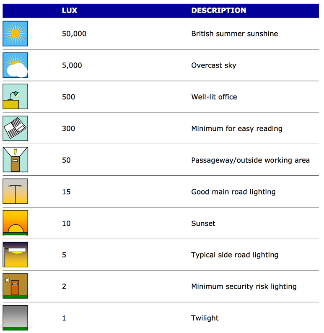

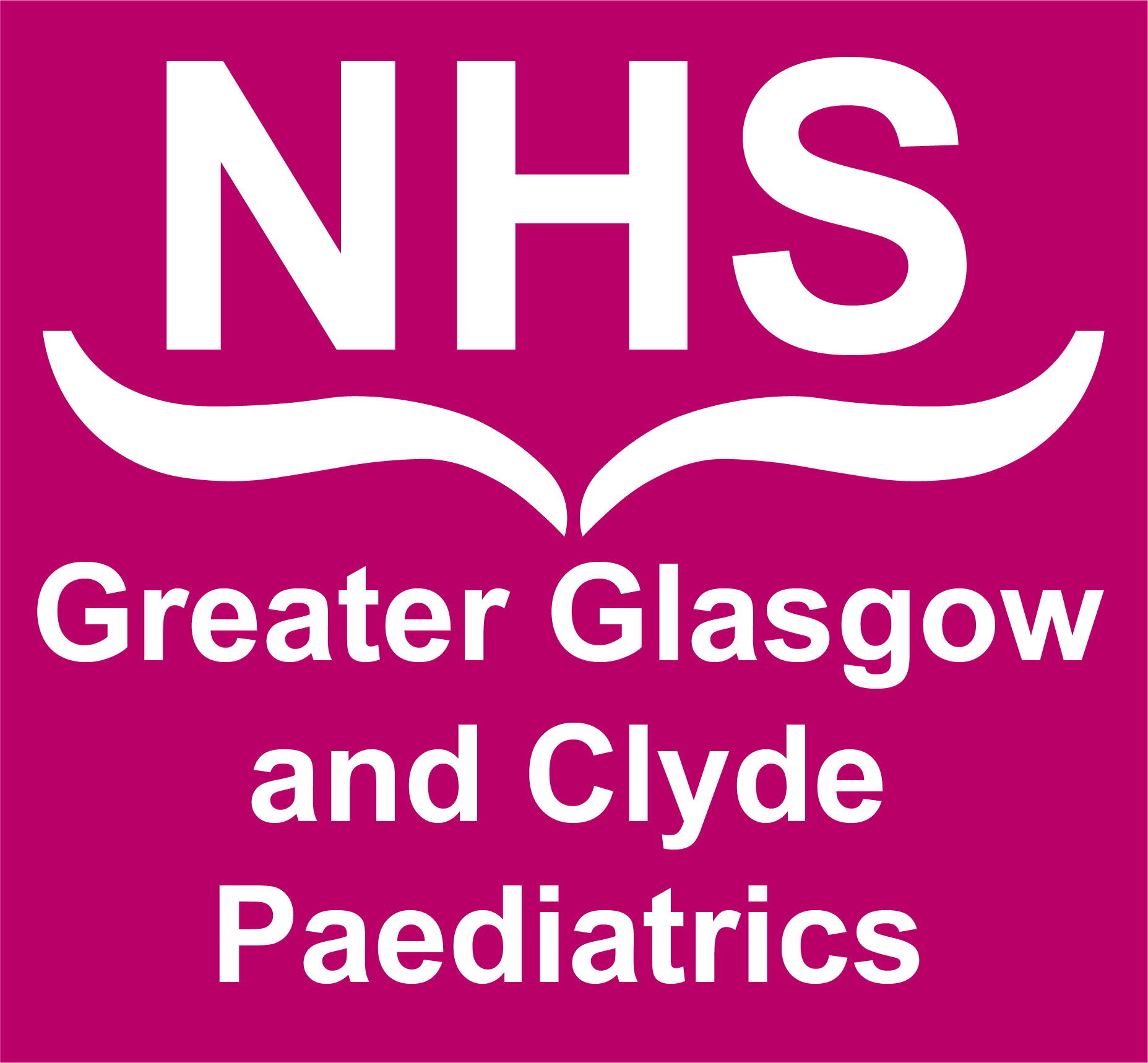
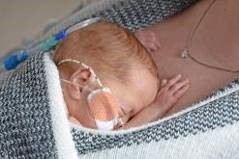


 Teaching video available -
Teaching video available - 


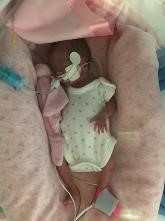
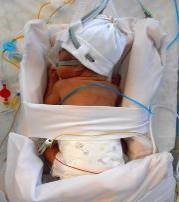
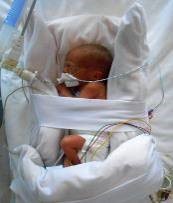



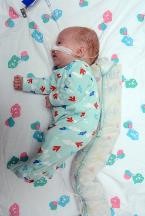
 Video:
Video: 














